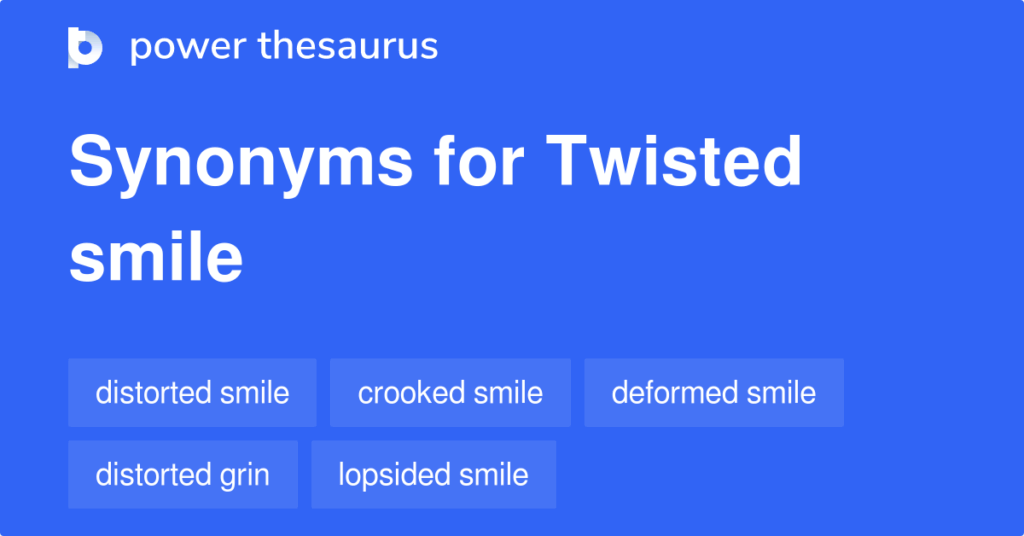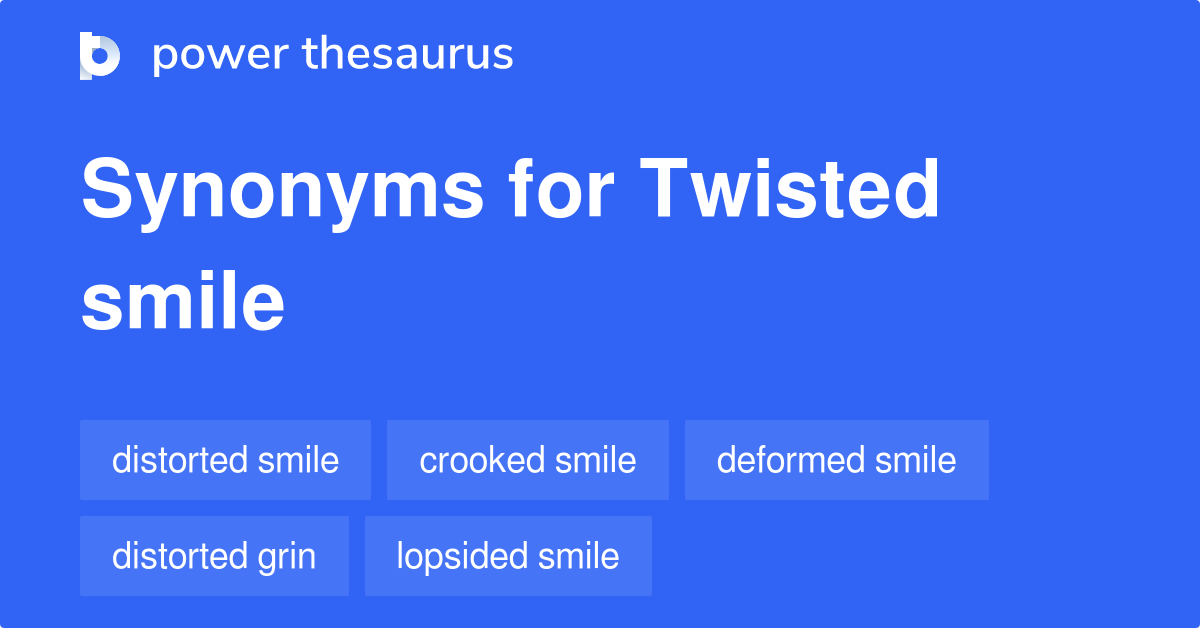
Decoding a Twisted Smile: Understanding the Nuances of Nonverbal Communication
A twisted smile, a fleeting expression that can convey a multitude of emotions, is a fascinating subject in the realm of nonverbal communication. Unlike a genuine smile, which radiates warmth and sincerity, a twisted smile often hints at something more complex – sarcasm, skepticism, suppressed anger, or even a subtle form of deception. Understanding the nuances of this expression can significantly improve your ability to interpret social cues and navigate interpersonal relationships effectively. This article delves into the psychology behind the twisted smile, exploring its various interpretations and providing insights into how to accurately decipher its meaning in different contexts.
The Psychology Behind Facial Expressions
Facial expressions are a fundamental aspect of human communication, acting as a window into our inner thoughts and feelings. While some expressions are universal and easily recognized across cultures, others are more subtle and require careful observation. The twisted smile falls into the latter category. It’s not a primary emotion, but rather a secondary expression that often overlays or contradicts other emotions. To understand it, we need to consider the underlying emotional state of the person displaying it.
The human face is incredibly expressive, with muscles capable of creating thousands of different expressions. These expressions are controlled by both voluntary and involuntary neural pathways. Genuine smiles, known as Duchenne smiles, involve the activation of muscles around the eyes (orbicularis oculi) in addition to the zygomatic major muscles that pull the corners of the mouth upwards. A twisted smile, however, often lacks this full engagement of the facial muscles, suggesting a lack of genuine happiness or amusement.
Common Interpretations of a Twisted Smile
The meaning of a twisted smile can vary depending on the context, the individual displaying it, and the accompanying body language. Here are some common interpretations:
- Sarcasm or Cynicism: A twisted smile is frequently used to express sarcasm or cynicism. The slight upturn of one corner of the mouth, combined with a certain glint in the eye, can indicate that the person doesn’t genuinely agree with or believe what they are saying.
- Skepticism or Disbelief: If someone is doubtful or unconvinced by what they are hearing, they might display a twisted smile as a nonverbal cue. This expression suggests that they are not entirely buying into the information presented.
- Suppressed Anger or Frustration: A twisted smile can also be a sign of suppressed anger or frustration. The person might be trying to maintain a polite facade while internally struggling with negative emotions. The twisted smile acts as a subtle leak of these underlying feelings.
- Deception or Concealment: In some cases, a twisted smile can be an indicator of deception. The person might be trying to mask their true feelings or intentions, and the twisted smile is a subconscious attempt to appear more agreeable or trustworthy. However, it’s important to note that a twisted smile alone is not a definitive sign of lying.
- Amusement or Bemusement: Occasionally, a twisted smile can express a slight amusement or bemusement, particularly in response to an absurd or unexpected situation. In this context, it’s a softer, more playful expression than the other interpretations.
The Role of Context in Deciphering the Meaning
Context is crucial when interpreting any facial expression, and the twisted smile is no exception. Consider the following factors:
- The situation: What is happening in the immediate environment? What topics are being discussed? Understanding the context can provide valuable clues about the underlying emotions being expressed.
- The individual: What is the person’s personality and communication style? Are they typically sarcastic or cynical? Knowing the individual’s baseline behavior can help you better interpret their expressions.
- Accompanying body language: Pay attention to other nonverbal cues, such as eye contact, posture, and hand gestures. These cues can provide additional information and help you determine the true meaning of the twisted smile. For instance, avoiding eye contact while displaying a twisted smile might suggest deception or discomfort.
Differentiating a Twisted Smile from Other Expressions
It’s important to distinguish a twisted smile from other similar expressions, such as a smirk or a wry smile. A smirk often implies self-satisfaction or smugness, while a wry smile typically conveys a sense of irony or resignation. While there can be overlap in these expressions, the underlying emotions and intentions are often different. A genuine smile involves the entire face, especially the eyes, whereas the twisted smile is more localized to one side of the mouth.
Misinterpreting facial expressions can lead to misunderstandings and communication breakdowns. Therefore, it’s essential to be mindful and consider all available information before drawing conclusions about someone’s emotional state. [See also: Understanding Microexpressions: The Key to Reading People’s Minds]
The Impact of Cultural Differences
While many facial expressions are universal, cultural differences can influence how they are displayed and interpreted. In some cultures, a twisted smile might be more commonly used to express sarcasm or skepticism, while in others, it might be considered impolite or inappropriate. Being aware of these cultural nuances can help you avoid misinterpretations and communicate more effectively across cultures.
For example, in some Western cultures, a twisted smile might be seen as a sign of confidence or assertiveness, while in some Eastern cultures, it could be perceived as disrespectful or arrogant. Understanding these cultural variations is crucial for navigating intercultural interactions successfully.
Practical Applications of Understanding Twisted Smiles
The ability to accurately interpret facial expressions, including the twisted smile, has numerous practical applications in various aspects of life:
- Interpersonal relationships: Understanding the nuances of nonverbal communication can improve your ability to connect with others, build rapport, and resolve conflicts effectively. Recognizing a twisted smile can help you detect underlying emotions and respond appropriately.
- Business and negotiations: In business settings, being able to read facial expressions can give you a competitive edge. You can use this knowledge to gauge the other party’s true intentions, identify potential areas of disagreement, and tailor your communication strategy accordingly.
- Law enforcement and security: Law enforcement professionals and security personnel can use their understanding of facial expressions to detect deception and identify potential threats. A twisted smile, combined with other behavioral cues, can raise suspicion and prompt further investigation.
- Healthcare: Healthcare providers can use their knowledge of nonverbal communication to better understand their patients’ emotional states and provide more compassionate and effective care. Recognizing a twisted smile can alert them to underlying pain, anxiety, or distress.
Tips for Improving Your Facial Expression Recognition Skills
If you want to improve your ability to read facial expressions, including the subtle nuances of a twisted smile, here are some tips:
- Practice observation: Pay attention to the facial expressions of people around you in everyday situations. Observe how their expressions change in response to different stimuli.
- Study facial anatomy: Learning about the muscles involved in facial expressions can help you better understand how different emotions are expressed.
- Use online resources: There are many online resources available, such as websites and videos, that can help you learn about facial expressions and practice your recognition skills.
- Watch videos with the sound off: Try watching videos of people interacting with the sound off and focus on their facial expressions. This can help you develop your ability to interpret emotions based solely on visual cues.
- Seek feedback: Ask friends or family members to give you feedback on your ability to read their facial expressions. This can help you identify areas where you need to improve.
Conclusion
The twisted smile is a complex and multifaceted expression that can convey a wide range of emotions. By understanding the psychology behind this expression, considering the context, and paying attention to accompanying body language, you can significantly improve your ability to interpret its meaning and navigate social interactions more effectively. Remember that a twisted smile alone is not always a definitive indicator of a specific emotion, but rather a subtle clue that requires careful consideration and interpretation. Continue to practice your observation skills and expand your knowledge of nonverbal communication to become a more perceptive and effective communicator. A twisted smile might just be the key to unlocking a deeper understanding of human interaction. [See also: The Power of Body Language in Communication]

